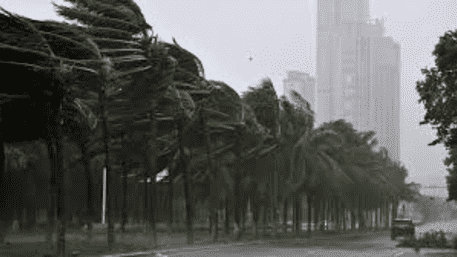Asia’s most powerful storm of the year, Super Typhoon Yagi, made landfall in China’s Hainan province on Friday, bringing destructive winds and heavy rain. The typhoon has caused widespread power outages, forced mass evacuations, and left the popular tourist island province in paralysis.
Yagi’s Destructive Force
With sustained winds of 234 km/h near its center, Typhoon Yagi ranks as the second most powerful tropical cyclone globally in 2024, following Hurricane Beryl in the Atlantic. The storm rapidly intensified after causing 16 deaths in the northern Philippines earlier this week and struck the city of Wenchang in Hainan with tremendous force on Friday afternoon.
Widespread Power Outages and Evacuations
The powerful typhoon caused significant power disruptions in Hainan, leaving around 830,000 households without electricity, according to the official news agency Xinhua. An emergency response team of 7,000 workers was assembled to restore power as soon as the weather allowed. By Friday night, electricity had been restored to 260,000 households, but the recovery process remains ongoing.
In anticipation of Yagi’s arrival, the province’s residents—more than 10 million people—were advised to stay indoors. The storm also led to the cancellation of flights and ferry services, as well as the closure of businesses across the island.
Impact Beyond Hainan
The effects of Typhoon Yagi were not limited to Hainan. The typhoon forced the shutdown of schools, businesses, and transport in Hong Kong, Macau, and Guangdong province. In Guangdong, over 574,000 people were evacuated from at-risk areas, with the majority coming from Zhanjiang. The financial hub of Hong Kong experienced flight cancellations, with 50 flights grounded on Thursday, and the city lowered its typhoon warning after midday on Friday as the storm moved westward.
Yagi also crossed the Qiongzhou Strait on Friday night, making a second landfall in Guangdong with winds still exceeding 200 km/h.
Rebuilding and the Path Ahead
Yagi is the most severe storm to strike Hainan since Typhoon Rammasun in 2014, which claimed 88 lives and caused economic losses exceeding 44 billion yuan ($6.25 billion). While no fatalities have been reported in Hainan so far, the storm’s destruction—overturned vehicles, uprooted trees, and damaged infrastructure—will require extensive rebuilding efforts.
Typhoons and Climate Change
Typhoons are growing stronger as climate change continues to warm ocean waters, according to scientists. Yagi is the latest in a series of devastating storms to hit Asia, including Typhoon Shanshan, which struck Japan last week as the strongest storm the country has seen in decades.
As the damage from Super Typhoon Yagi becomes clearer, the resilience of the affected regions will be tested. With more storms likely fueled by climate change, preparations for future disasters must become a priority.























